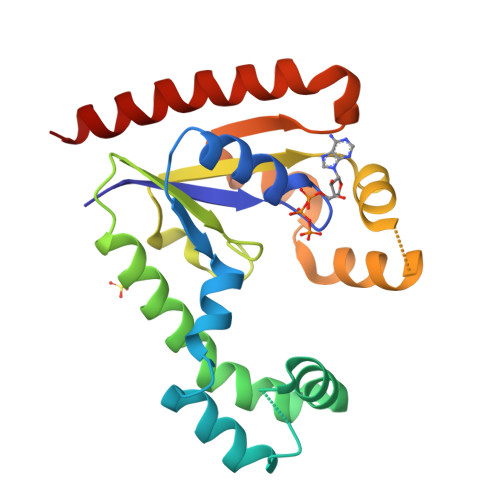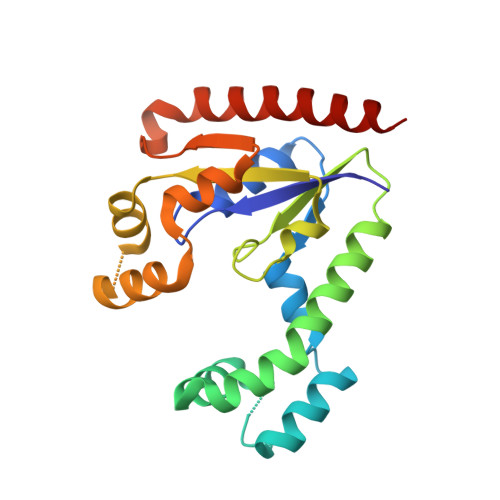Crystal structure of dephospho-coenzyme A kinase from Haemophilus influenzae.
Obmolova, G., Teplyakov, A., Bonander, N., Eisenstein, E., Howard, A.J., Gilliland, G.L.(2001) J Struct Biol 136: 119-125
- PubMed: 11886213
- DOI: https://doi.org/10.1006/jsbi.2001.4428
- Primary Citation of Related Structures:
1JJV - PubMed Abstract:
Dephospho-coenzyme A kinase catalyzes the final step in CoA biosynthesis, the phosphorylation of the 3'-hydroxyl group of ribose using ATP as a phosphate donor. The protein from Haemophilus influenzae was cloned and expressed, and its crystal structure was determined at 2.0-A resolution in complex with ATP. The protein molecule consists of three domains: the canonical nucleotide-binding domain with a five-stranded parallel beta-sheet, the substrate-binding alpha-helical domain, and the lid domain formed by a pair of alpha-helices. The overall topology of the protein resembles the structures of nucleotide kinases. ATP binds in the P-loop in a manner observed in other kinases. The CoA-binding site is located at the interface of all three domains. The double-pocket structure of the substrate-binding site is unusual for nucleotide kinases. Amino acid residues implicated in substrate binding and catalysis have been identified. The structure analysis suggests large domain movements during the catalytic cycle.
Organizational Affiliation:
Center for Advanced Research in Biotechnology of the University of Maryland Biotechnology Institute, National Institute of Standards and Technology, 9600 Gudelsky Drive, Rockville, Maryland 20850, USA.





















